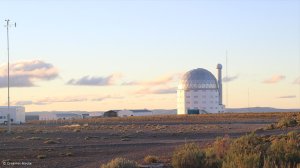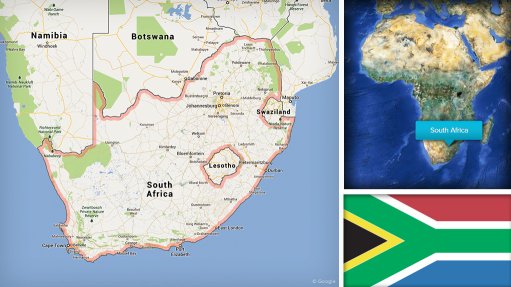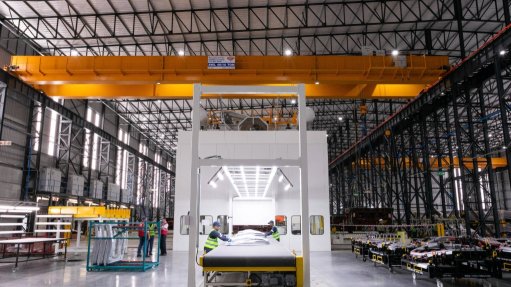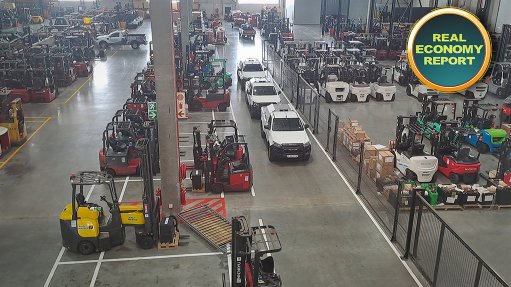South Africa’s biggest optical telescope has celebrated 20 years of operation
The Southern African Large Telescope (SALT), located at the South African Optical Observatory (SAAO) complex at Sutherland, in the Northern Cape province, celebrated its twentieth anniversary on Monday. Authorised in 1998, when the then South African government committed $10-million in funding for it, completed and opened in 2005, and starting full scientific operations in 2011, SALT was the largest optical telescope in Africa and one of the most powerful in the world.
(SAAO is a national facility of the National Research Foundation (NRF).)
“SALT was built to serve both science and society, linking frontier research with education, technology and socio-economic development,” highlighted Science, Technology and Innovation Deputy Minister Dr Nomalungelo Gina, in her keynote address at the anniversary celebration. “It showed that big science can drive national progress. SALT’s 20-year journey is a story of vision, perseverance and excellence. We remain committed to ensuring it continues to shine as a beacon of African science, uniting research, education, and innovation for the benefit of humanity.”
Although South Africa had a long history of hosting and operating optical telescopes, SALT was the first optical telescope actually built in South Africa. All the rest had been imported.
“[SALT] represented a conviction that South Africa could build and sustain a world-class research facility and, through it, redefine its place in global science,” affirmed NRF board chair Professor Mosa Moshabela. “From conception to construction, and through two decades of operation, the NRF has remained the principal shareholder, funder, and custodian of SALT’s success. Over 50 doctoral theses have been produced using SALT data, and hundreds of students have gained hands-on training at the Observatory. Many of them now occupy leading positions in research and technology, locally and abroad.”
SALT has been responsible for, or involved in, a string of major discoveries and observations. In 2017, it was one of the first telescopes to make observations of the optical afterglow of a neutron star merger, designated as the kilonova of GW170817. In 2019, using a technique called exoplanet microlensing, it helped in the characterisation of newly discovered exoplanets (that is, planets in other star systems), which displayed its ability to undertake swift follow-up spectroscopy. Then, in 2020, SALT identified eight super-hot stars (deepening our knowledge of the evolution of stars). It followed this up, in 2022, with the discovery of the “peekaboo” galaxy, from the early universe, which had ultra-low levels of elements heavier than helium. And in 2023, it confirmed the gravitational binding that held a unique four-star system together, so providing data for theories on the formation of multi-star systems.
Article Enquiry
Email Article
Save Article
Feedback
To advertise email advertising@creamermedia.co.za or click here
Comments
Press Office
Announcements
What's On
Subscribe to improve your user experience...
Option 1 (equivalent of R125 a month):
Receive a weekly copy of Creamer Media's Engineering News & Mining Weekly magazine
(print copy for those in South Africa and e-magazine for those outside of South Africa)
Receive daily email newsletters
Access to full search results
Access archive of magazine back copies
Access to Projects in Progress
Access to ONE Research Report of your choice in PDF format
Option 2 (equivalent of R375 a month):
All benefits from Option 1
PLUS
Access to Creamer Media's Research Channel Africa for ALL Research Reports, in PDF format, on various industrial and mining sectors
including Electricity; Water; Energy Transition; Hydrogen; Roads, Rail and Ports; Coal; Gold; Platinum; Battery Metals; etc.
Already a subscriber?
Forgotten your password?
Receive weekly copy of Creamer Media's Engineering News & Mining Weekly magazine (print copy for those in South Africa and e-magazine for those outside of South Africa)
➕
Recieve daily email newsletters
➕
Access to full search results
➕
Access archive of magazine back copies
➕
Access to Projects in Progress
➕
Access to ONE Research Report of your choice in PDF format
RESEARCH CHANNEL AFRICA
R4500 (equivalent of R375 a month)
SUBSCRIBEAll benefits from Option 1
➕
Access to Creamer Media's Research Channel Africa for ALL Research Reports on various industrial and mining sectors, in PDF format, including on:
Electricity
➕
Water
➕
Energy Transition
➕
Hydrogen
➕
Roads, Rail and Ports
➕
Coal
➕
Gold
➕
Platinum
➕
Battery Metals
➕
etc.
Receive all benefits from Option 1 or Option 2 delivered to numerous people at your company
➕
Multiple User names and Passwords for simultaneous log-ins
➕
Intranet integration access to all in your organisation





















